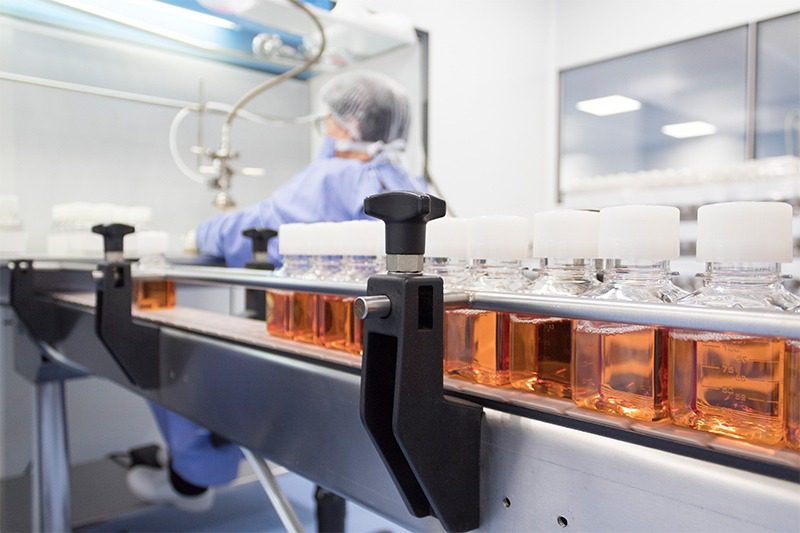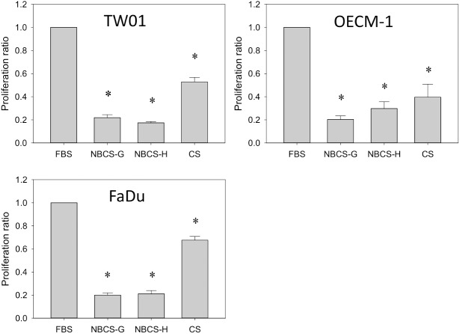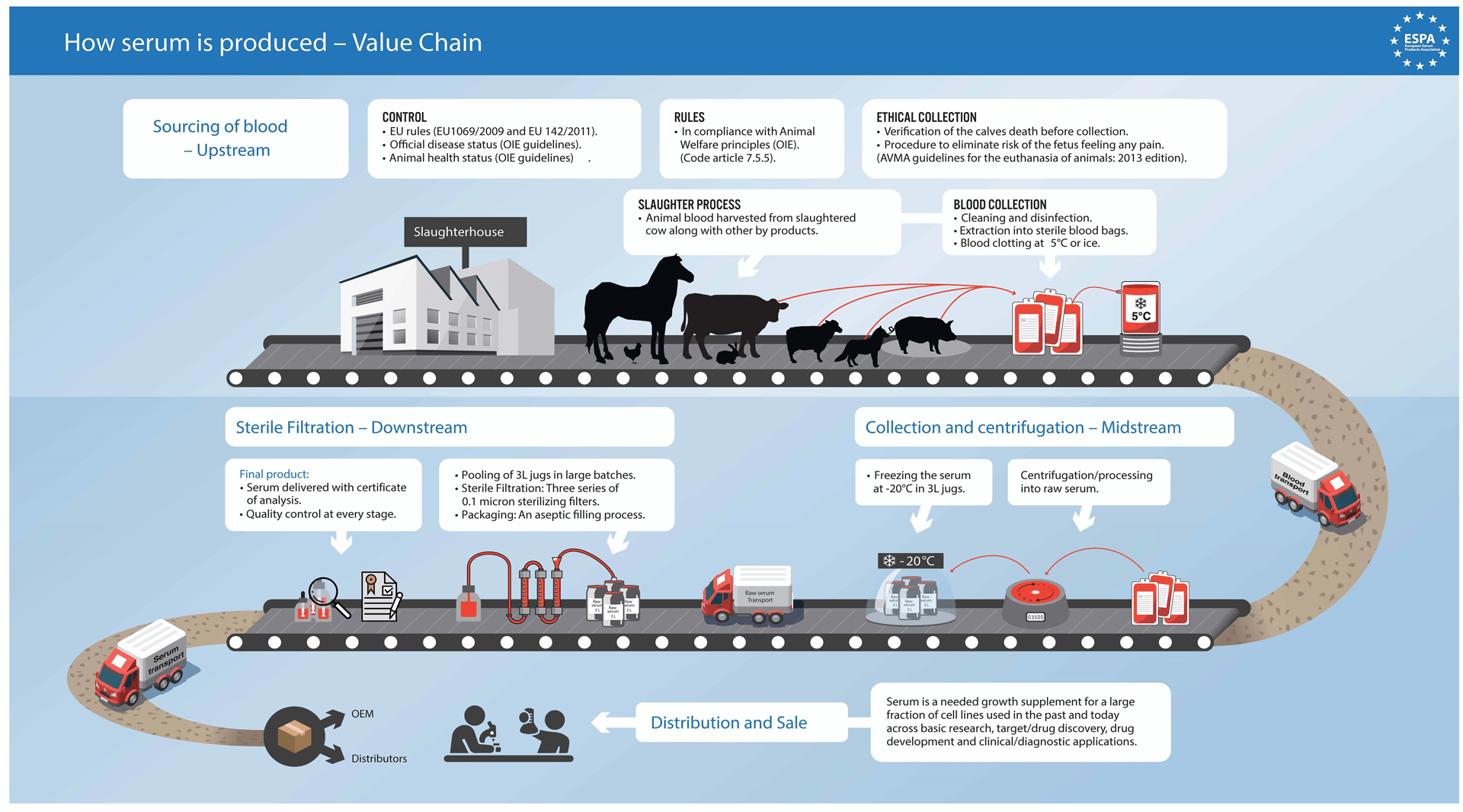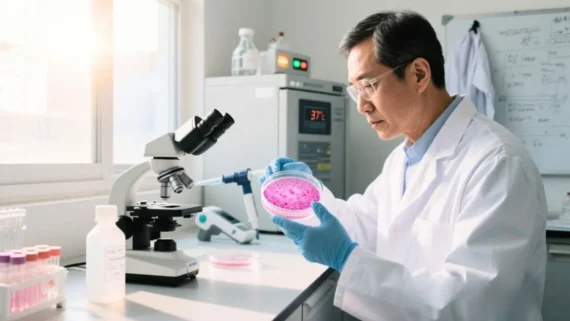- Your cart is empty
- Continue Shopping

How does Transdermal Patches Actually Deliver Drug To Our Body?
Learn how transdermal patches deliver medication through the skin, offering controlled, non-invasive drug delivery for medical and cosmetic use.

In cell culture, selecting the right serum is crucial for the success of your experiments.Bovine serum, derived from the liquid portion of blood from domestic cattle, provides essential nutrients, growth factors, and proteins necessary for cells to survive, grow, and thrive in vitro. It’s a vital component in cell culture media, packed with hormones, lipids, and growth factors.Bovine serum is a by-product of the meat industry, collected during the slaughter of cattle. The blood used to create this serum can be sourced from various stages of the cattle’s life, resulting in different types of bovine serum:
Not all bovine serums are the same. The type of bovine serum impacts its composition, particularly the levels of growth factors, proteins, and antibodies, which influence its suitability for different cell culture applications. Here’s a breakdown:
| Types of Bovine Serum | Source | Key Characteristics |
| Fetal Bovine Serum | From the blood of unborn bovine fetuses | High Growth Factor Content: FBS is rich in growth factors, making it highly effective in promoting cell growth and proliferation. Low Antibody Levels: Since the immune system of the fetus is not fully developed, FBS has lower levels of antibodies, reducing the risk of immune reactions in cell cultures. Versatility: FBS is widely used across various cell types and is considered the gold standard in cell culture. |
| Newborn Calf Serum | From calves that are less than 20 days old | Moderate Growth Factor Content: Newborn calf serum contains a decent level of growth factors, though generally lower than that found in FBS. Increased Antibody Levels: As the calves have started to develop their immune systems, the serum contains higher levels of antibodies compared to FBS. Specific Applications: This serum may be used in specialised cell cultures or in cases where FBS is not required. |
| Calf Serum | from calves aged between 20 days and 12 months. | Lower Growth Factor Content: The growth factor levels in calf serum are lower than in FBS, making it less potent for supporting cell proliferation. Higher Antibody Levels: As the calves age, their immune systems produce more antibodies, which are present in the serum. Selective Use: Calf serum is used in cell culture applications where the high growth factor content of FBS is not necessary, or where specific proteins or antibodies from the serum are needed. |
| Adult Bovine Serum | from cattle older than 12 months. | Low Growth Factor Content: Adult bovine serum has significantly lower levels of growth factors compared to FBS and is less effective in promoting cell growth. High Antibody Levels: The immune system of adult cattle is fully developed, resulting in higher levels of antibodies in the serum. Specialised Use: Adult bovine serum is less commonly used in general cell culture but may be employed in specific applications where the presence of particular antibodies or proteins is beneficial. |
FBS is the most popular serum in cell culture due to its high growth factor content and low antibody levels, making it versatile for a wide range of cell types. FBS is obtained from the blood of bovine fetuses, which becomes available only when a proportion of female cattle, slaughtered for meat, are unexpectedly found to be pregnant. The fetuses are a by-product of the meat industry, and their blood is collected to produce the serum, and more than two million bovine fetuses are used worldwide to produce approximately 800,000 liters of FBS.
Its composition, influenced by the diet and environment of the pregnant female, includes vital components like growth factors, hormones, proteins, and minerals that are crucial for cell growth, proliferation, adhesion, and differentiation.
However, as demand for FBS continues to rise and its availability becomes increasingly limited, the cost of FBS has steadily increased over the years. This scarcity has prompted researchers and industries to explore alternatives, including other types of bovine serum. Despite these efforts, it’s important to recognise that not all bovine serum types are suitable for every cell line. Therefore, it is crucial to rigorously test alternative sera on specific cell lines to evaluate their effects on growth and phenotype. For instance, a study (Figure 1) demonstrated that newborn calf serum may not be an effective substitute for FBS when culturing head and neck cell lines.

Figure 1: Newborn calf serum did not provide favourable conditions for the growth of head and neck cell lines. The proliferation of cells cultured in newborn calf serum (NBCS) and calf serum (CS) at 72 h was presented as the relative proliferation ratio of cells in FBS (1.0-fold). Data indicate the average value of triplicates (mean ± SD). *:p<0.001 compared with cells cultured in FBS. NBCS-G: Gibco NBCS; NBCS-H: HyClone NBCS.
Credit: Fang CY et. al., doi: 10.1371/journal.pone.0178960
Reproduced under the Creative Commons license
Given these challenges, understanding the nuances of different bovine serum types and their specific applications is vital for successful cell culture. FBS remains the gold standard due to its rich composition and unmatched versatility, making it the preferred choice for a wide range of cell types. However, as the field of cell culture continues to evolve, careful consideration and testing of alternative sera will be essential to ensure compatibility with specific cell lines and to maintain the high standards required for successful experimental outcomes.
The production of FBS involves several tightly controlled steps:

Figure 2: How FBS is produced.
Credit: https://serumproducts.eu/what-is-serum/
These steps ensure the serum’s quality and reduce the degradation of biologically active ingredients essential for cell growth.
The term “Fetal Calf Serum” (FCS) is a misnomer and shouldn’t be used interchangeably with “Fetal Bovine Serum” (FBS). A fetus refers to an unborn animal still in the womb, while a calf is a young bovine that has already been born. Therefore, “fetal calf” is incorrect terminology. The correct term is Fetal Bovine Serum (FBS), which refers to serum derived from the blood of bovine fetuses.
The confusion between FBS and FCS may stem from the historical usage of these terms or from a misunderstanding of bovine developmental stages. However, using the correct terminology is crucial, especially in scientific research, where precision and accuracy are paramount.
The idea that FBS from a specific geographic region is superior is a common misconception. In reality, the origin of FBS doesn’t inherently determine its quality or effectiveness in cell culture. The performance of FBS is influenced more by its compatibility with specific cell lines rather than where it was sourced.
FBS is collected globally, with major production centers in countries like the United States, Australia, New Zealand, South America, and parts of Europe. While these regions may differ in their cattle breeding practices, environmental conditions, and agricultural regulations, these factors don’t necessarily translate into a measurable difference in the quality of FBS. The variation in serum composition within a region can often be just as significant as differences between regions.
What truly matters is how well a particular batch of FBS supports the growth and viability of the specific cell lines being used in your research. Different cell lines have unique requirements and may respond differently to the various growth factors, proteins, and other components present in FBS. A batch that performs exceptionally well for one cell line might not be as effective for another, even if both batches were sourced from the same region.
This variability necessitates rigorous batch testing by researchers. Before committing to a large volume of FBS, it’s standard practice to test several batches to identify which one provides the best support for the intended cell culture work. This process involves assessing factors such as cell growth rate, viability, morphology, and specific cellular functions. By carefully selecting the most compatible batch, researchers can optimise their cell culture outcomes, ensuring reproducibility and consistency in their experiments.
The global market for Fetal Bovine Serum (FBS) has experienced significant fluctuations in recent years, mirroring the volatility of the stock market. A confluence of factors, from changing cattle breeding practices to ethical and regulatory concerns, has contributed to a tightening supply and rising prices.
One major factor is the rising cost of meat and calves, which has led to changes in cattle breeding practices. Improved breeding techniques have made cattle production more efficient, resulting in fewer pregnant cows being sent to slaughter. These advancements have directly reduced the supply of FBS. The availability of FBS is further constrained by the ethical and regulatory concerns surrounding the harvesting of serum from fetuses, as well as the tightening of animal welfare standards in many countries.
To address these supply issues, the collection of FBS has expanded to new regions over the years, including countries in South America, Australasia, and parts of Europe. Initially, this expansion helped stabilise the global supply, but the options for sourcing FBS from new regions have now been largely exhausted. As a result, the world is facing a shrinking supply of FBS, with fewer sources available to meet the growing demand.
Despite the decreasing supply, the demand for FBS continues to escalate, driven by rapid advancements in cutting-edge research fields such as stem cell research, cell therapy, and vaccine development. These areas rely heavily on FBS as a key component in cell culture. As research in these fields expands, the demand for high-quality FBS has surged, further intensifying the strain on the global supply.
This growing disparity between supply and demand has created a critical supply-demand imbalance in the FBS market. Prices for FBS have been steadily increasing, making it an expensive resource for researchers and laboratories worldwide. The scarcity of FBS has also led to concerns about the sustainability of its use in research, prompting many in the scientific community to explore alternatives such as serum-free media or synthetic serum substitutes.
As the global FBS market continues to navigate these supply and demand pressures, it is clear that the scientific community must adapt to these changes by embracing more efficient and ethical approaches to cell culture. This will be essential to ensuring the continued advancement of biomedical research in the face of a constrained FBS supply.
References
Fang CY, Wu CC, Fang CL, Chen WY, Chen CL. Long-term growth comparison studies of FBS and FBS alternatives in six head and neck cell lines. PLoS One. 2017 Jun 7;12(6):e0178960. doi: 10.1371/journal.pone.0178960.
Lee DY, Lee SY, Yun SH, Jeong JW, Kim JH, Kim HW, Choi JS, Kim GD, Joo ST, Choi I, Hur SJ. Review of the Current Research on Fetal Bovine Serum and the Development of Cultured Meat. Food Sci Anim Resour. 2022 Sep;42(5):775-799. doi: 10.5851/kosfa.2022.e46. Epub 2022 Sep 1.

Connect With Our Technical Specialist.

Request For A Quotation.

Learn how transdermal patches deliver medication through the skin, offering controlled, non-invasive drug delivery for medical and cosmetic use.

Discover why hypothermic cell transport is safer and smarter than cryopreservation or room temp methods for preserving cell viability in transit.

Master cell culture best practices with 7 critical parameters—from passage tracking to pH, endotoxins, and viability—for consistent, healthy cell growth.

Contact our Customer Care, Sales & Scientific Assistance

Consult and asked questions about our products & services

Documentation of Technical & Safety Data Sheet, Guides and more...